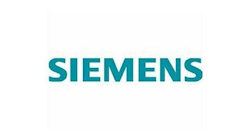CA: Siemens To Bring eHighway Demonstration To California
Siemens has been selected by the South Coast Air Quality Management District(SCAQMD) to install an eHighway system in the proximity of the Ports of LosAngeles and Long Beach, the two largest ports in the U.S.
Siemens eHighway is theelectrification of select highway lanes via a catenary system which supplies truckswith electric power, similar to how modern day trolleys or streetcars are powered onmany city streets, while still offering the same flexibility as diesel trucks. A two-way,one-mile mile catenary system will be installed by Siemens and the system will bedemonstrated with different battery-electric and hybrid trucks. The expected result islower fossil fuel consumption, substantially reduced smog-forming, toxic and CO2emissions, and lower operating costs. Siemens and the Volvo Group, via itssubsidiary Mack Trucks brand, are developing a demonstration vehicle for theproject. Siemens also is supplying current collectors, the technology that allowstrucks to connect and disconnect from the catenary system at any speed, to localCalifornia truck integrators whose vehicles will also be part of the demonstration.
"As the first and second busiest container ports in the U.S., Long Beach and LosAngeles can benefit tremendously from the eHighway system, significantly reducingemissions from commercial trucks that normally contribute to much of the airpollution in this region," said Matthias Schlelein, president of Siemens Mobility andLogistics division in the U.S. "These intricate logistical hubs need to meet increasinglocal and global demand for goods, and by improving the transportation systems inand around the Port, we hope to help them meet this demand through the use ofsophisticated and innovative electrification technology while at the same timeimproving the local environmental conditions like air quality." Schelein adds, "theeconomic logic of the eHighway system is very compelling for cities like LA, wheremany trucks travel a concentrated and relatively short distance. Highly traveledcorridors such as this are where we will initially see eHighway being applied."
"I'm happy to see the Los Angeles region leading the way in bringing cutting edgetechnology to an increasingly important economic center," said Los AngelesCouncilman Joe Buscaino. "The eHighway project is a great example of howelectricity can help power the next generation of transportation systems while alsoproviding cleaner air for our citizens in the process."
The catenary infrastructure will be installed on the North and South-bound sectionsof Alameda Street where it intersects with Sepulveda Boulevard in Carson,California. Up to four trucks will be running in the demonstration, making multipledrives per day. Thanks to an innovative current collector the trucks can connect anddisconnect from the catenary system at any speed for dynamic power supply directlyto the electric engine and for on-board storage. To further ensure the same flexibilityas conventional trucks, the eHighway vehicles use an electric drive system, whichcan be powered either by diesel, compressed natural gas (CNG), battery or otheron-board energy source, when driving outside of the catenary lines.
"This project will help us evaluate the feasibility of a zero-emission cargo movementsystem using overhead catenaries," said Barry Wallerstein, SCAQMD's executiveofficer. "Southern California's air pollution is so severe that it needs, among otherstrategies, zero- and near-zero emission goods movement technologies to achieveclean air standards."
SCAQMD is the air pollution control agency for Orange County and major portionsof Los Angeles, San Bernardino and Riverside counties, the most polluted region inthe nation. For more than 25 years, its Technology Advancement Office hasfostered advanced low- to zero-emission technologies for a wide range of mobilesources, from passenger vehicles to ocean-going ships.
SCAQMD commissioned a report by independent consultancy Gladstein, Neandross& Associates (GNA), which investigated how air quality can be improved, despiteincreases in drayage traffic between the ports and inland logistic hubs. GNAconcluded that catenary hybrid vehicles "can simultaneously address emissions andfuel economy issues while providing operational flexibility at a similar or lower costof ownership as other zero-emission technologies". The demonstration projectserves the purpose of evaluating the technology, together with the truckmanufacturing industry. It is the intention of this demonstration to generate aknowledge base for a potential future extension of the system to commercialapplications locally and regionally.
The project installation will begin immediately with infrastructure commissioned andfirst truck integrated in order to start the one year demo in July 2015.



